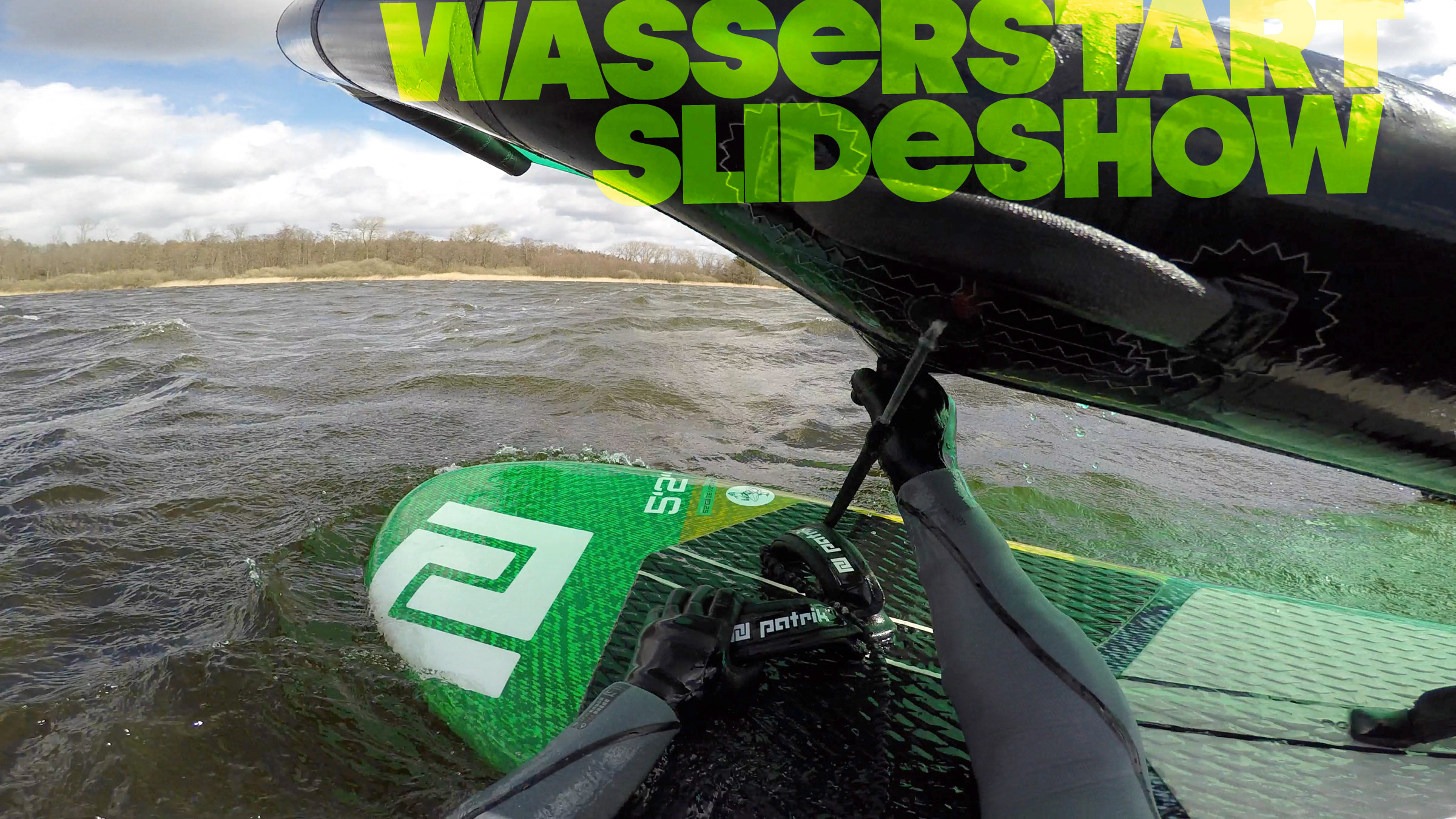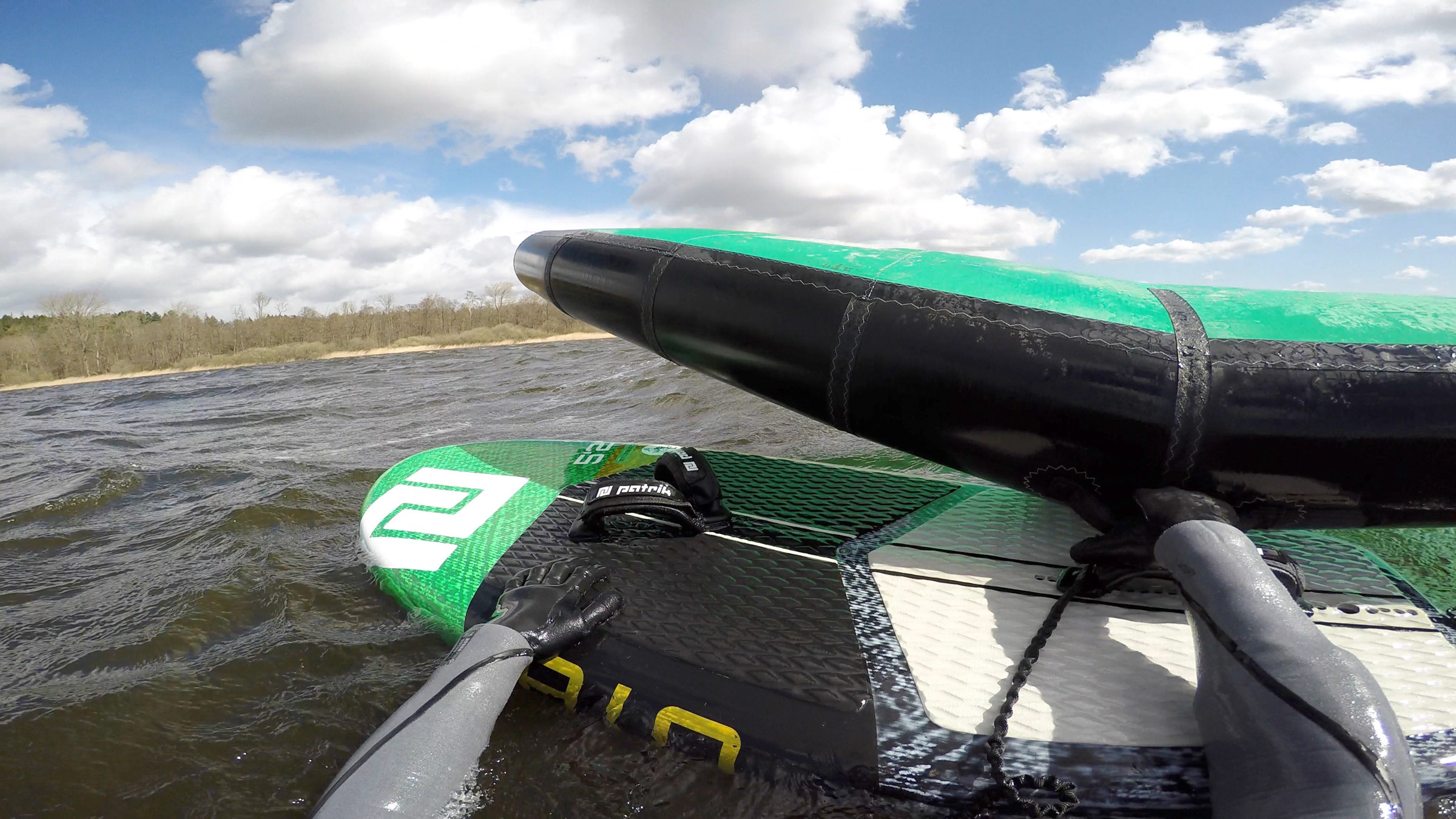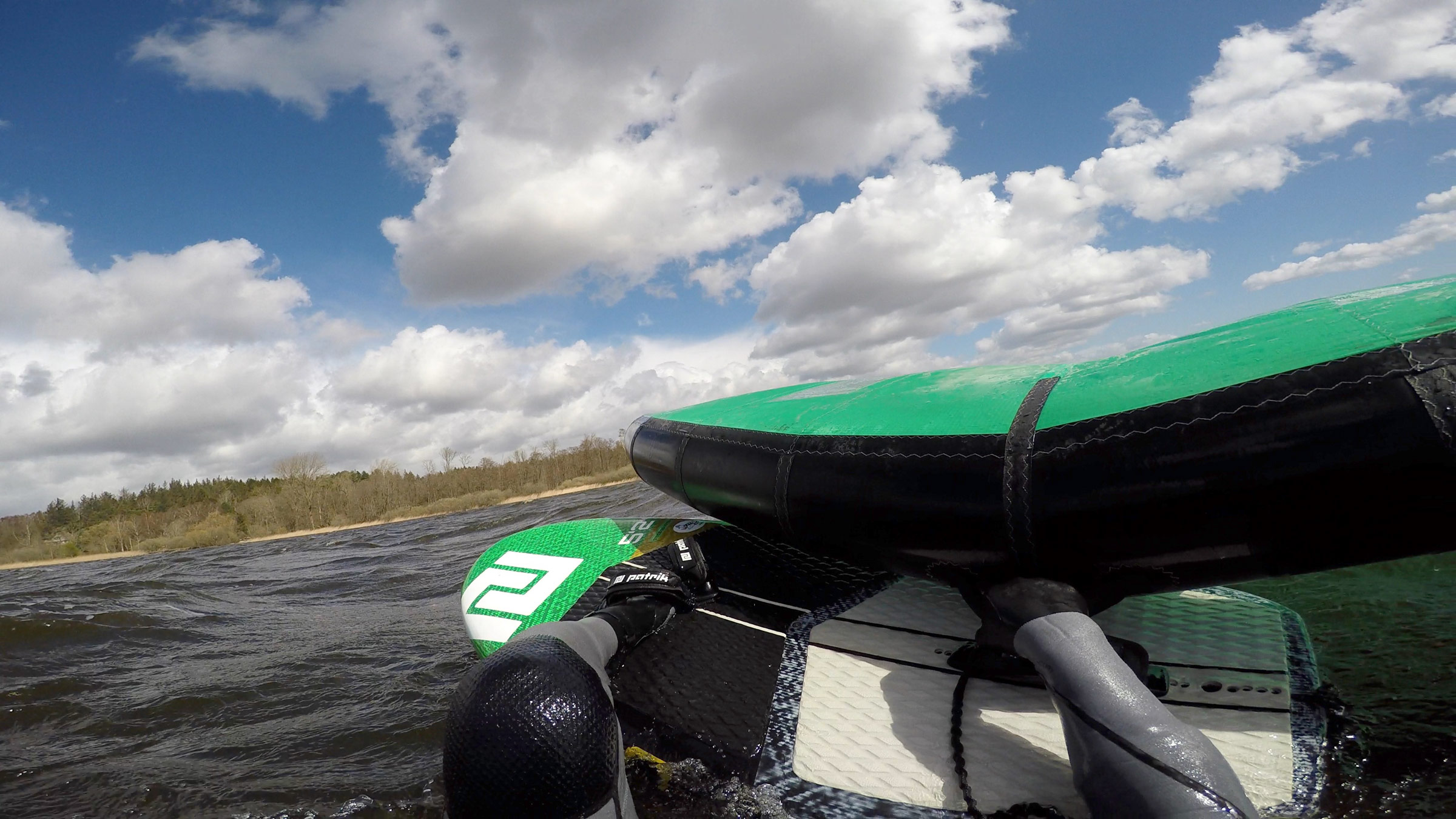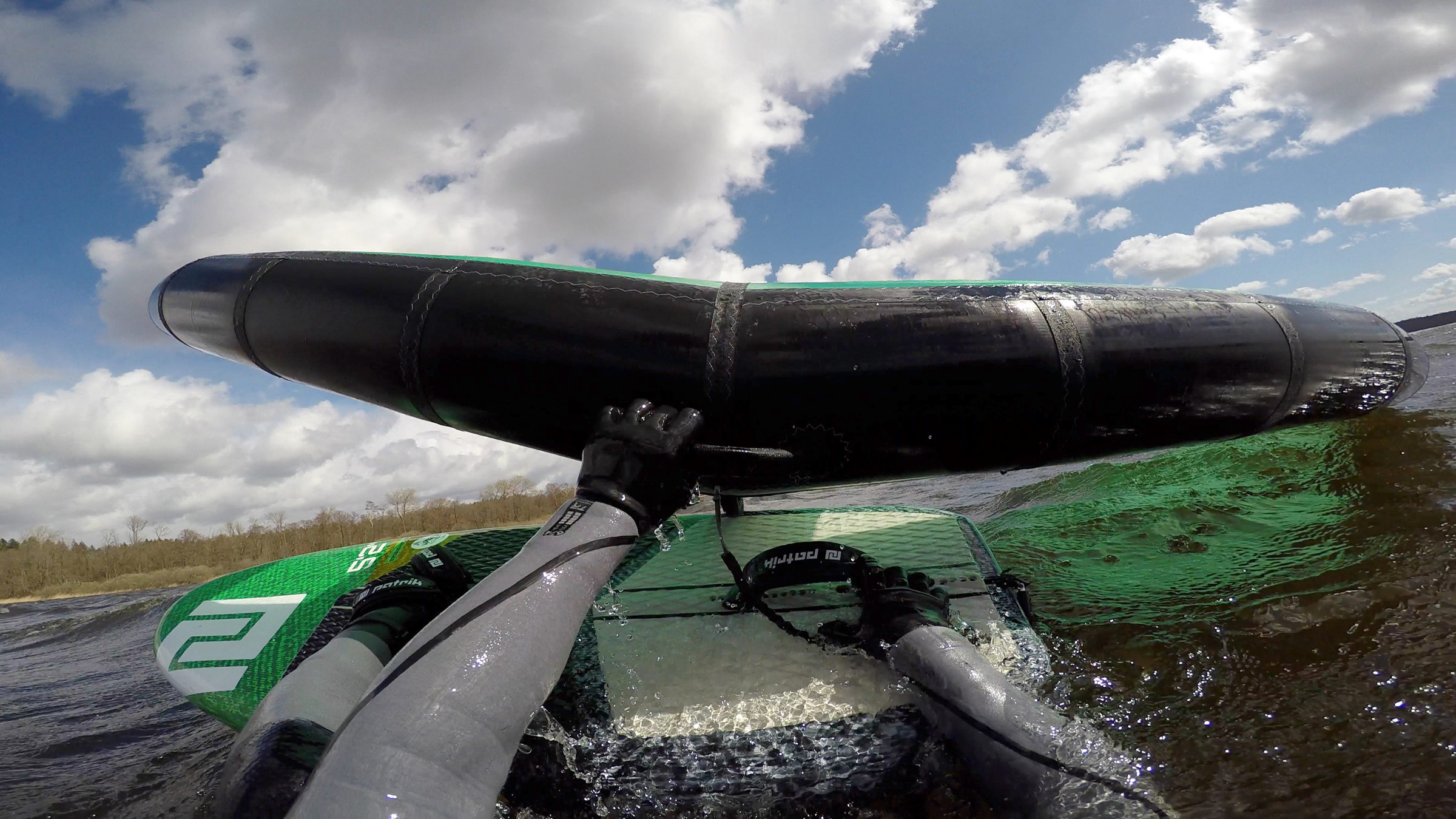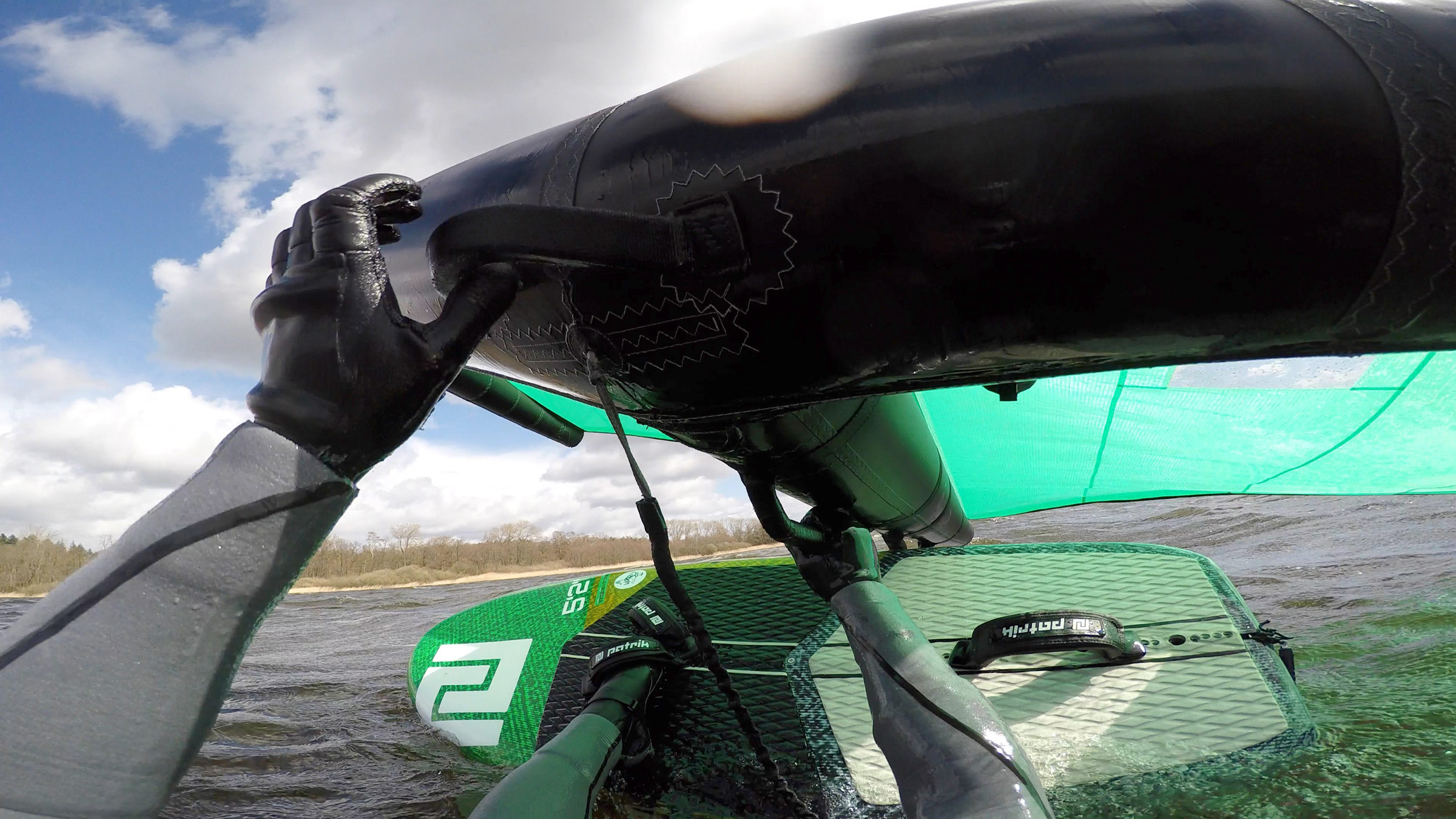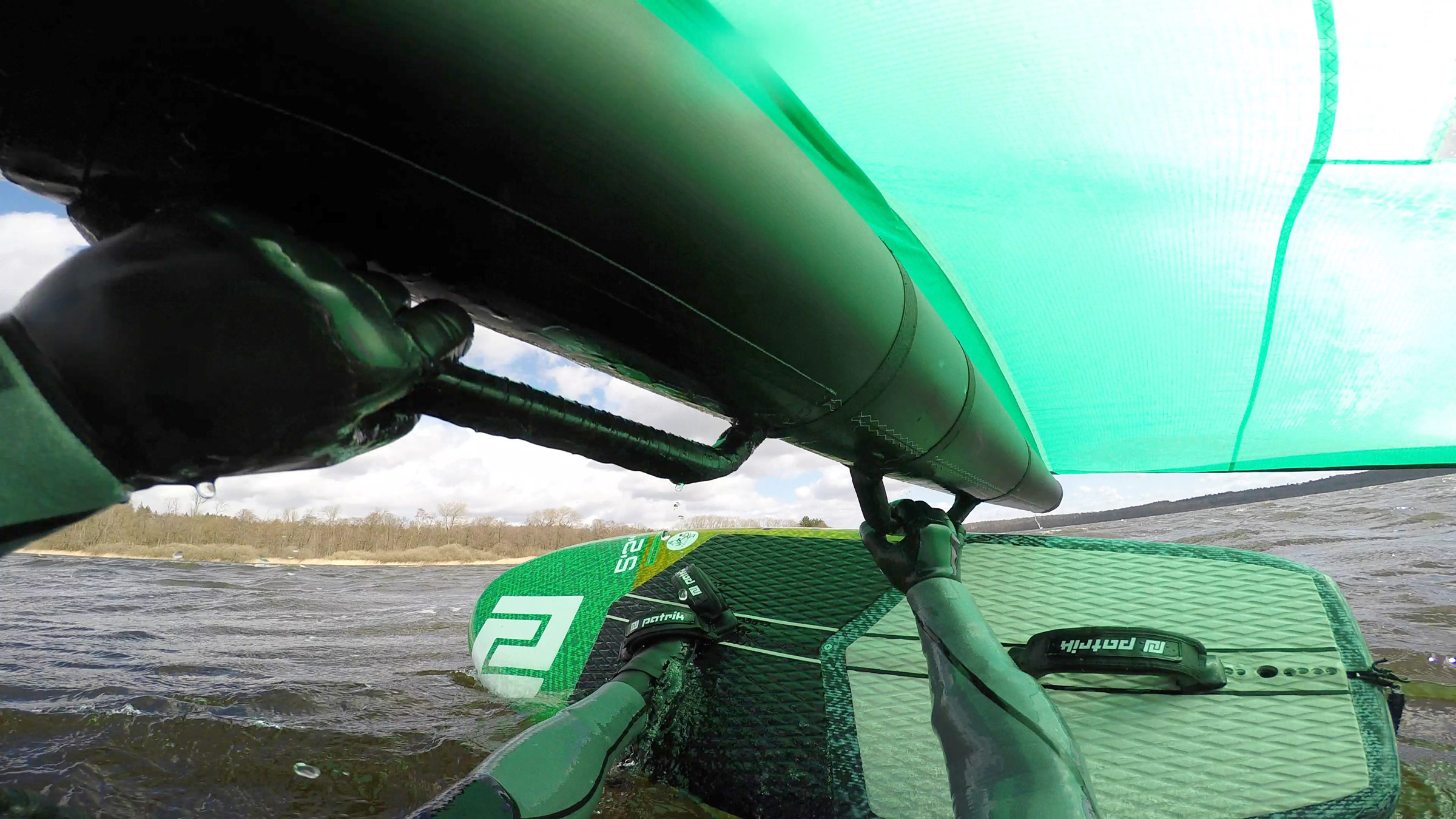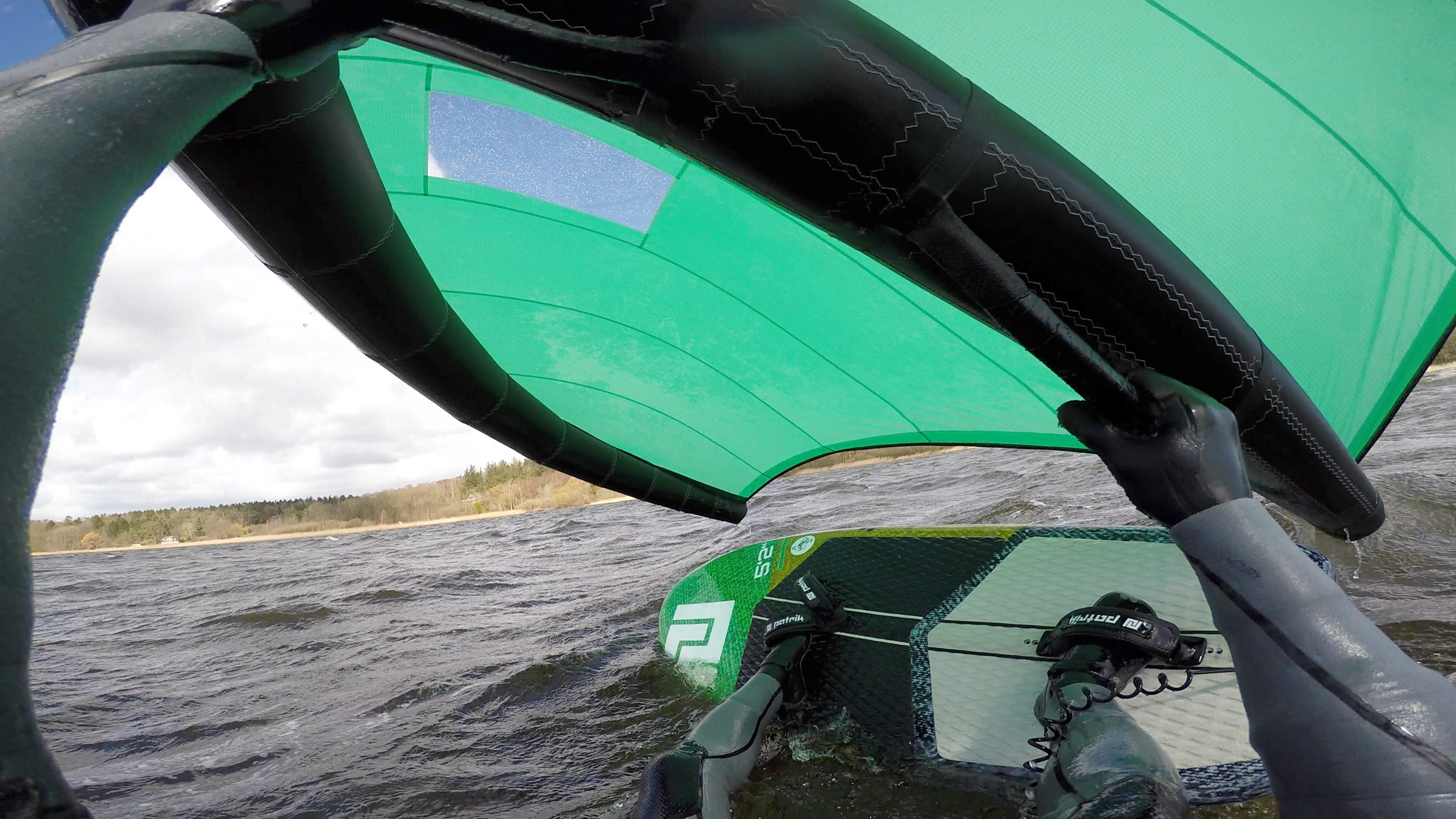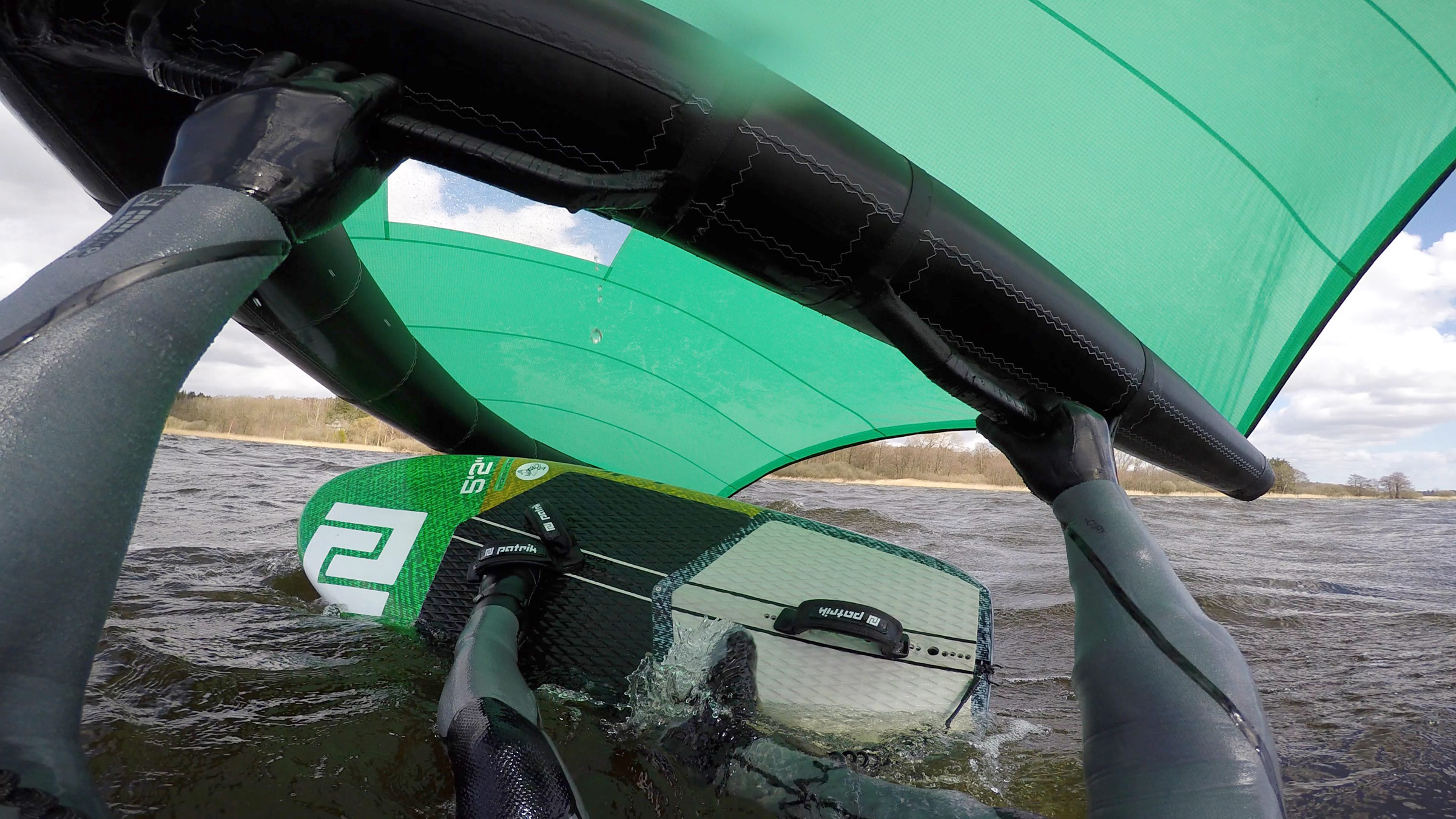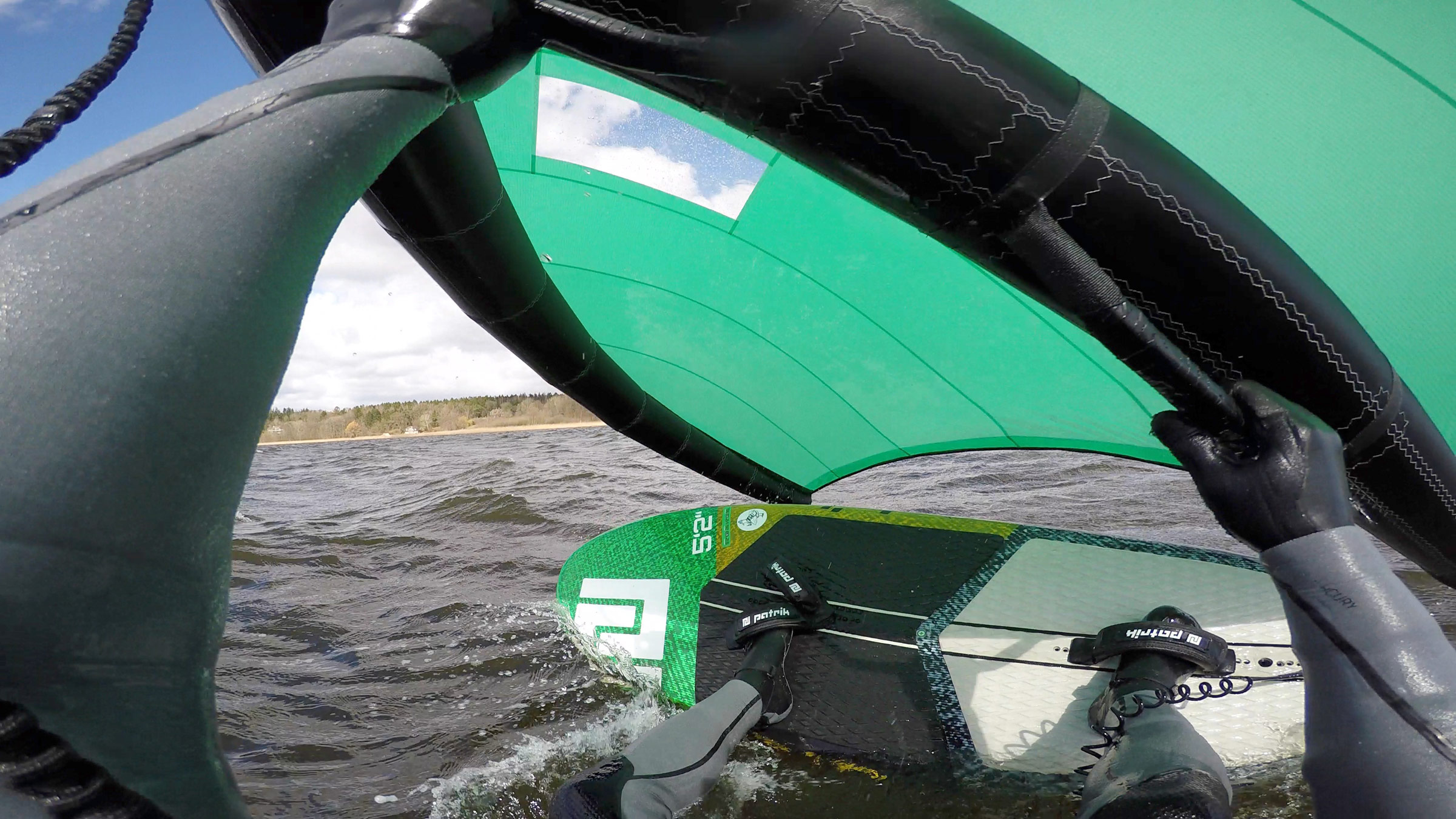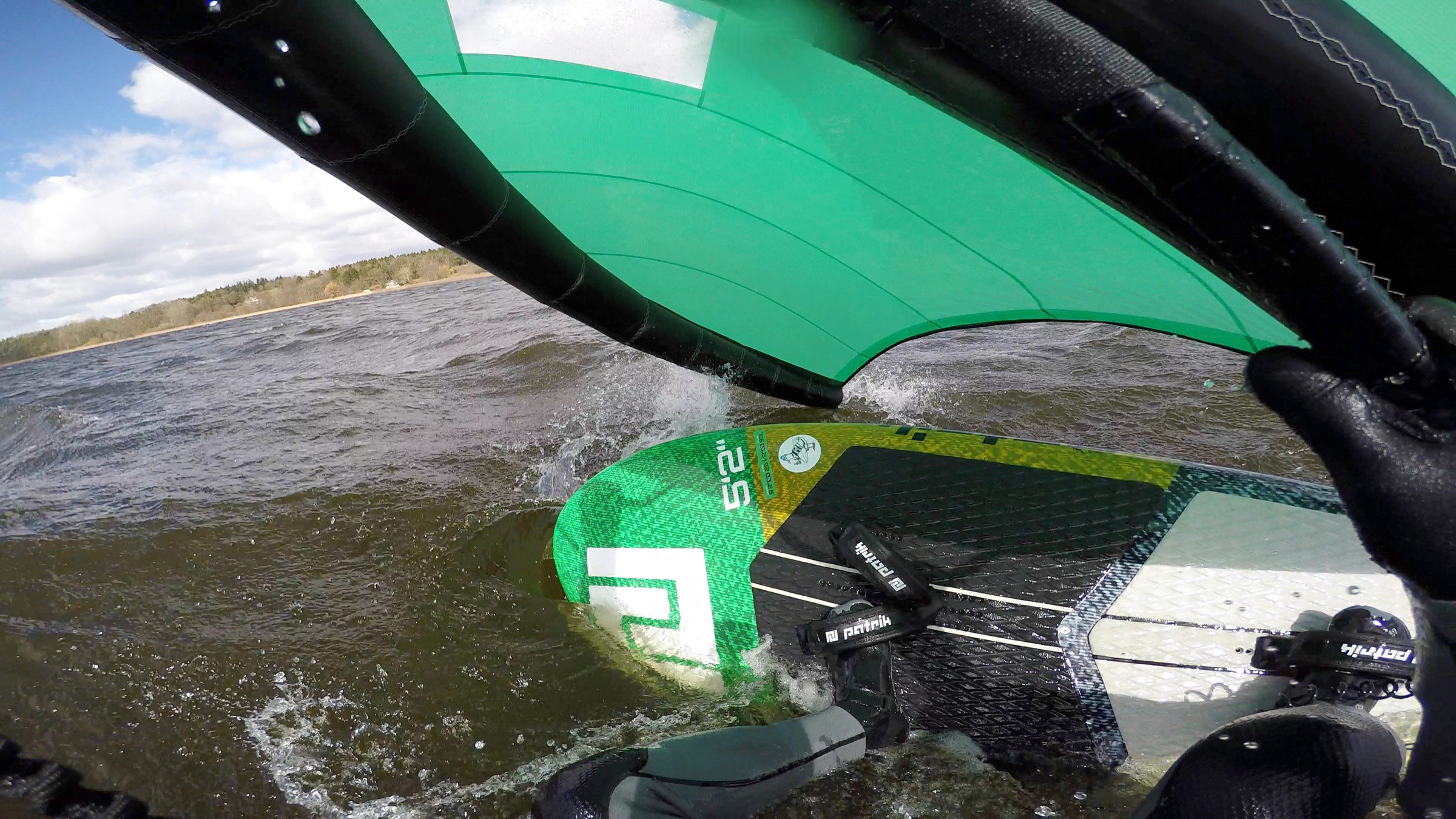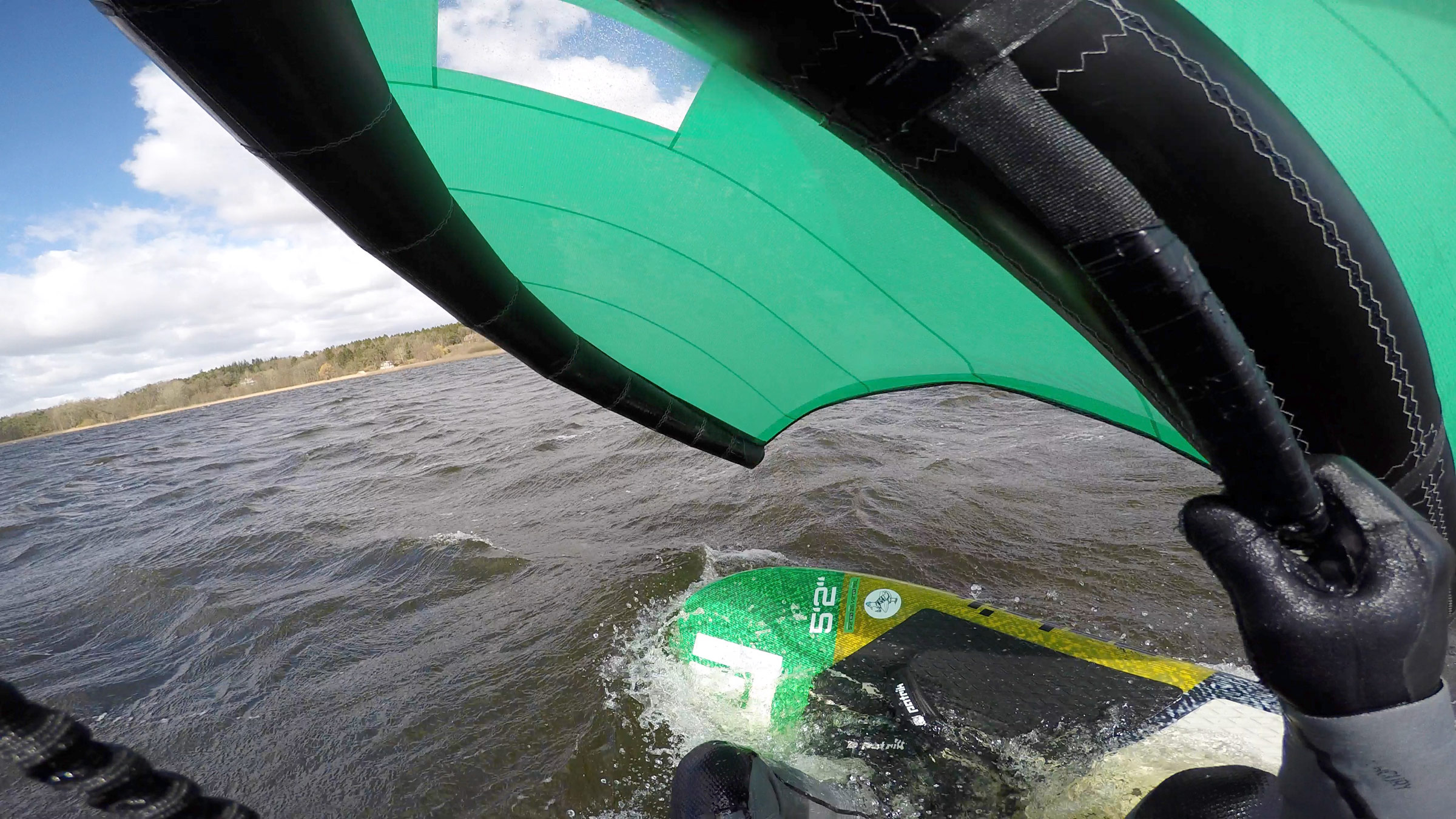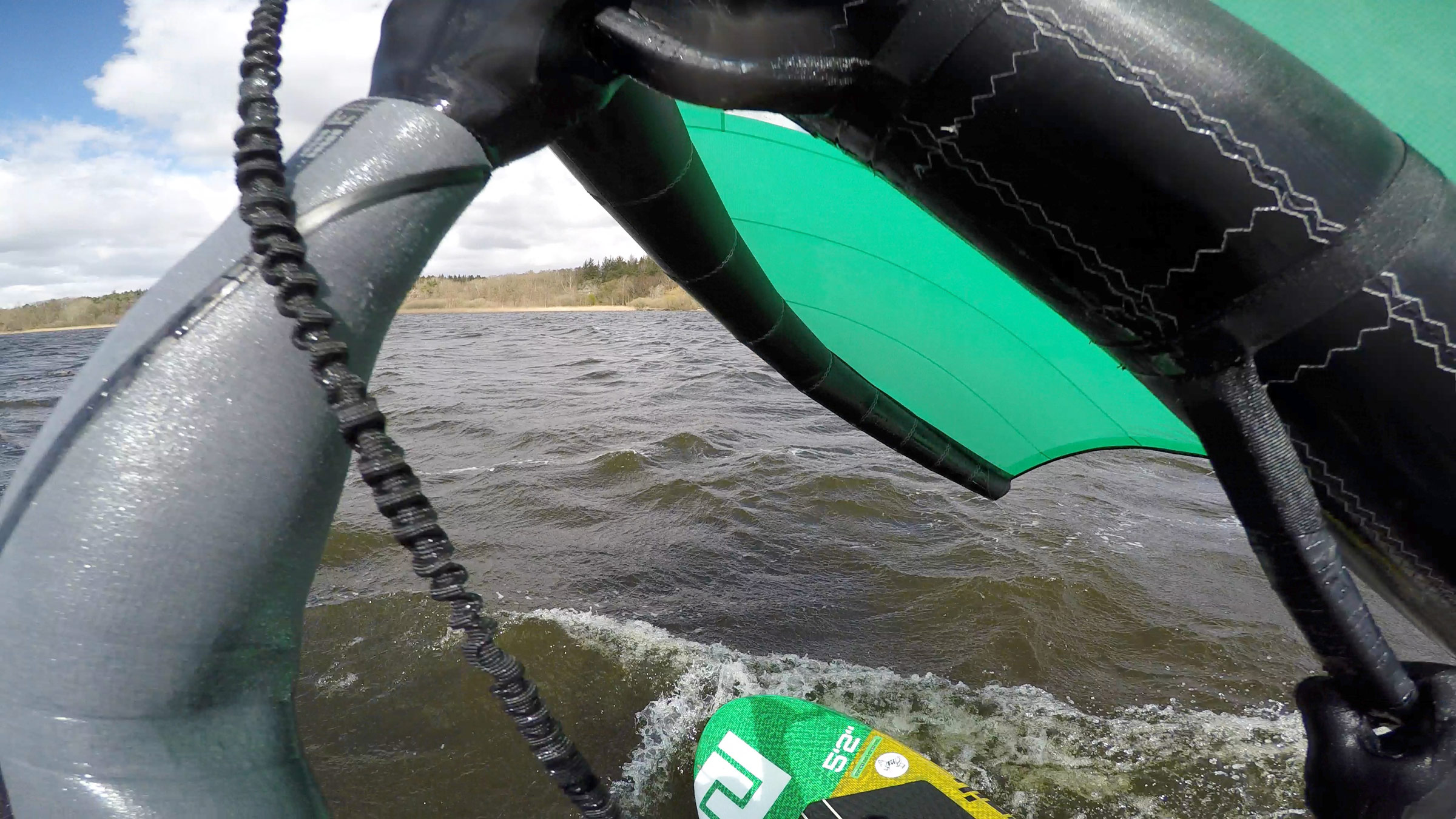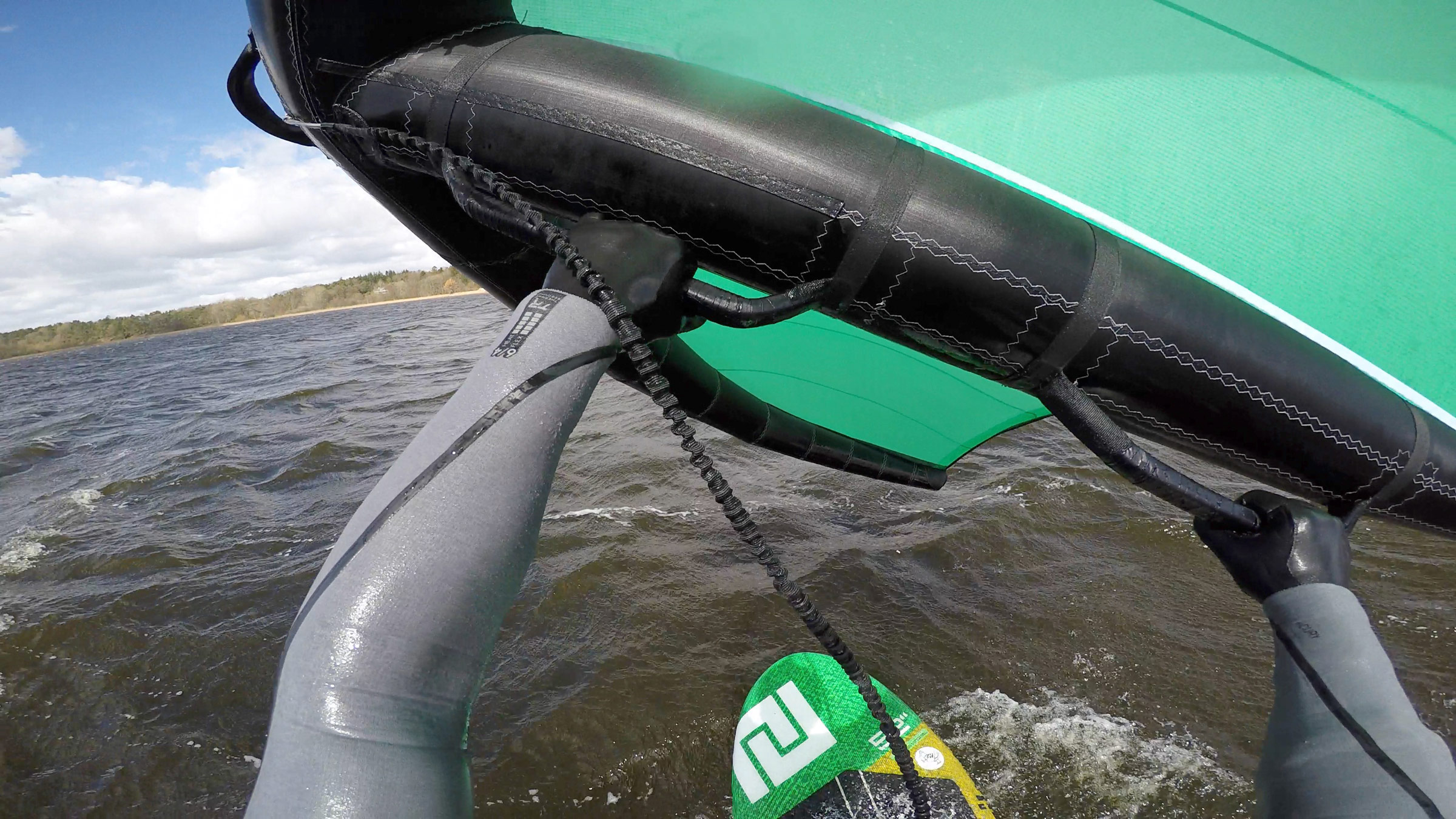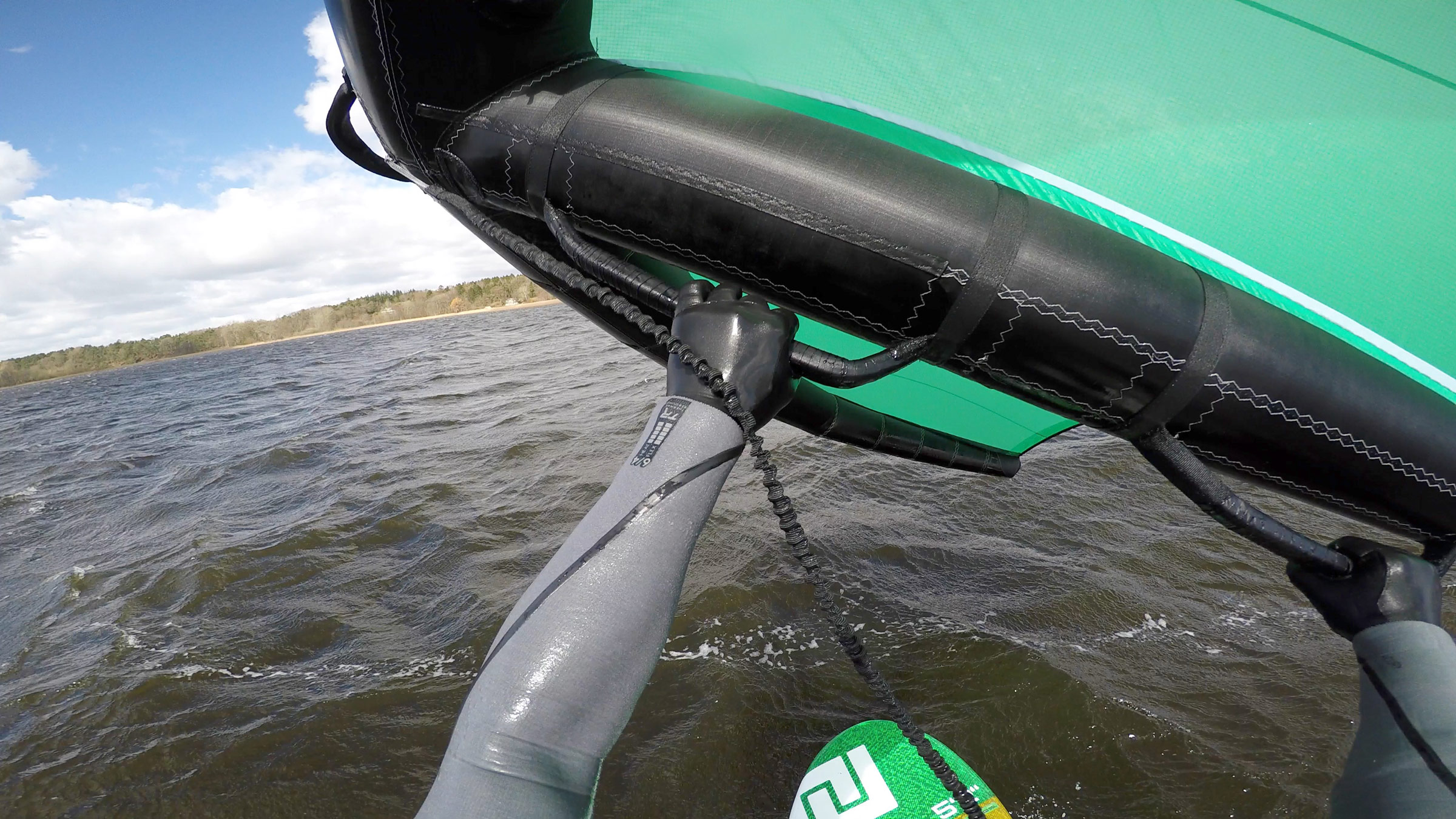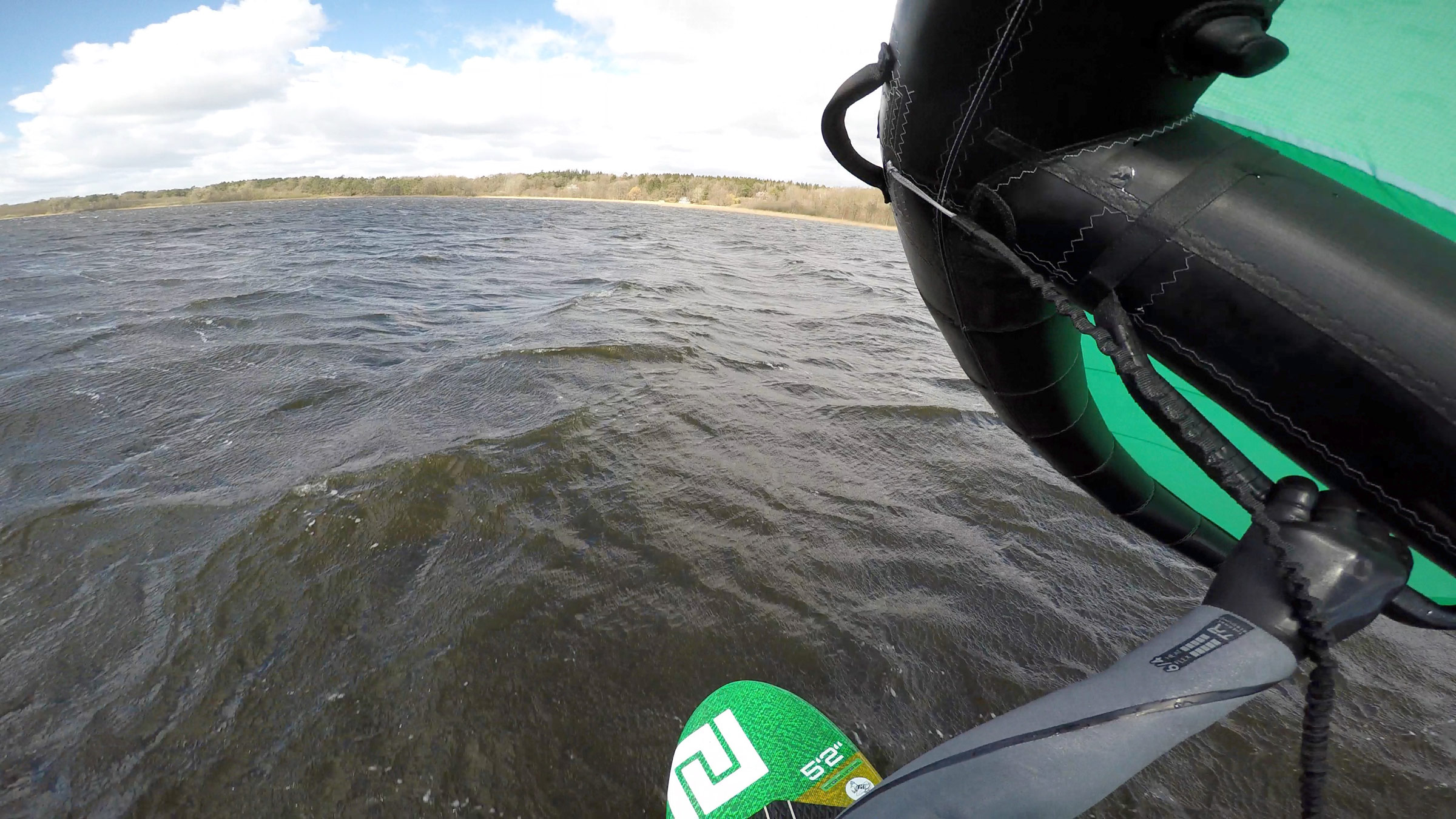Tutorial
Water Start
How to let the wing lift you up onto the board
You need stronger wind for a water start when wing foiling. By the way, water start does not refer to pushing a small board underwater and then balancing on them to stand up with the lift of the wing (sinker start), but to the start technique where you swim next to the board in the water.
This technique is similar to the water start in windsurfing or kitesurfing, where you wait for a gust and then let yourself be lifted onto the board by the sail or kite.
Get lifted by a wing is a little more challenging because, compared to windsurfing, there is no connection between the wing and the board to provide additional support (when windsurfing, you can also transfer your body weight to the board via the mast base =
use this connection as a third leg). It is also much easier when kiting, as the kite flies high in the air and develops a strong pull.
When wing foiling, you need the right gust and a good technique for a water start. The board should be equipped with foot straps. Position yourself upwind of the board with your back to the wind. The wing is held with leading edge into the wind. Insert the feet into the foot straps and dig the lower rail in the water.
Difficulty with large-volume and wide boards
The smaller the board, the easier the water start. A large-volume board tends to float flat on the water. If you try to put your feet in the foot straps, your ankles will initially be hyperextended. With large-volume boards, it can help to put only the front foot in the strap and then just place the rear foot on the deck.
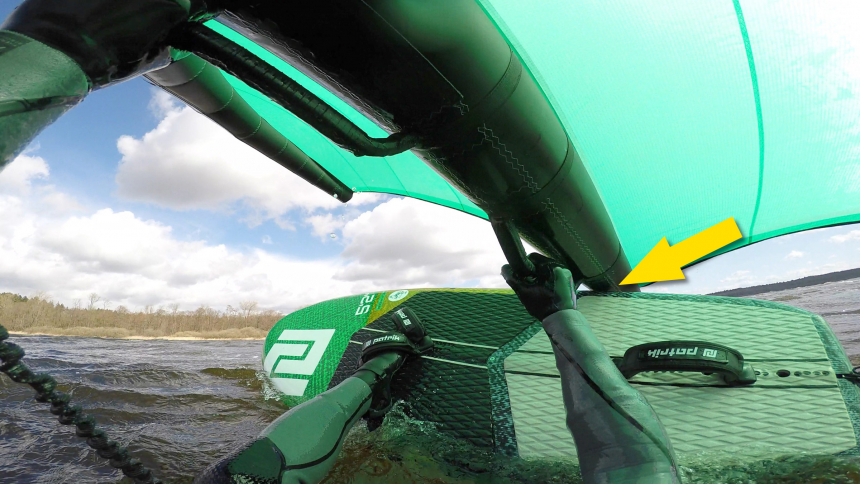
When canting wide boards, the strut can lie on the rail. The wing and board then interfere with each other. This means that the wing cannot be positioned steeply.
The larger board width makes canting more difficult. A small board is easier to cant and push under water. With a wide board, the feet are higher above the water when canting, which results in a lower swimming position for the upper body.
Large and wide boards also make it difficult to hold the wing (especially for large wing sizes with a long strut). The end of the strut then quickly rests on the raised rail, making it difficult to position the wing steeply when launching and can cause unwanted momentum on the board.
Starting out of the water
To prepare the wing for the start, lift the front tube upwards with your front hand. The back hand pulls the wing tight to set it up steeply. The wind is powering up the wing and you use this moment to lift your upper body out of the water and bend your legs to get your center of gravity over the board quickly.
Avoid turning the board
One difficulty will be to keep the board on a crosswind course. Power in the wing with uneven load distribution on both feet causes the board to turn out or into the wind. Not only does the rail act as a pivot point, but also the foil, depending on the position of the board.

If the board luffs too much when starting, you have to counter-steer. Set the wing to neutral and steer the board back to leeward - this is easier with both feet on the board.
Tip #1
Practice the water start on the beach or on a grassy area. You will quickly notice which position of the wing generates the most upward lift. On the water, the drift and turning of the board must then be taken into consideration too. The best way to start your first attempts on the water is with smaller wings in strong winds. Once you have learned the necessary technique, you can get on the board even in lighter winds.
Tip #2
If the board is already picking up speed when you try to take off: use this speed to turn the board slightly into the wind. This makes it even easier to push against the board to be lifted by the wing.
Tip #3
A protector vest provides support. The buoyancy of the protector vest ensures that you swim at a higher level in the water and can therefore raise your arms higher during the water start. This makes it easier to control the wing.
As a general rule: the water start is not a light wind technique. The stronger the wind and the smaller the wing and board, the easier the water start when wing foiling.
Below we have integrated a video of the water start with 95 liter board and 5 square meter wing. The clip shows the water start in both directions. Good luck with your learning!
12.04.2022 © WING DAILY | Text: Jürgen Schall | Photos/Videos: Jürgen Schall
Basics Water Start Level ★★☆☆ Rider: Jürgen Schall Text: Jürgen Schall Photos/Videos: Jürgen Schall DE




